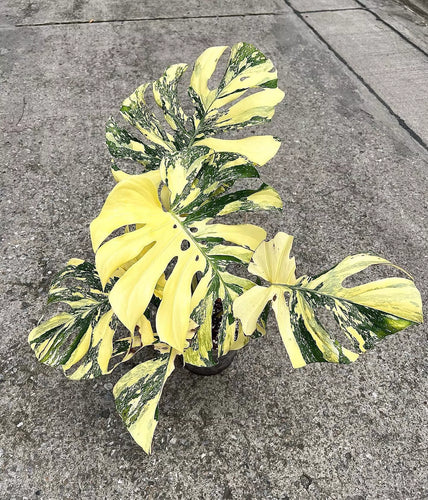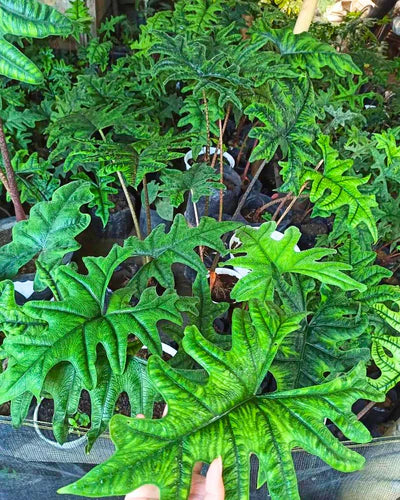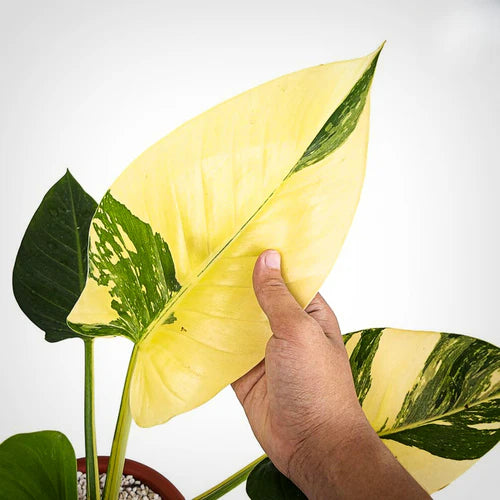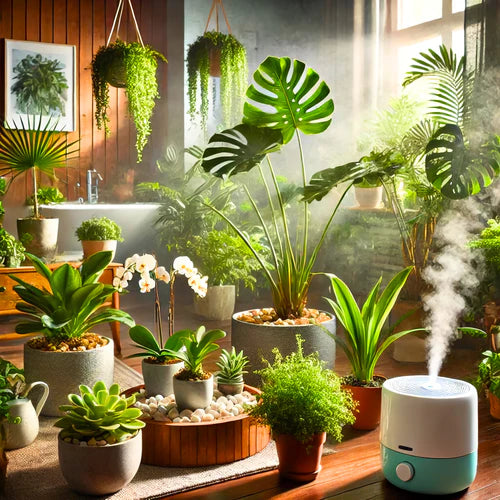Monstera Burle Marx Flame Care Guide
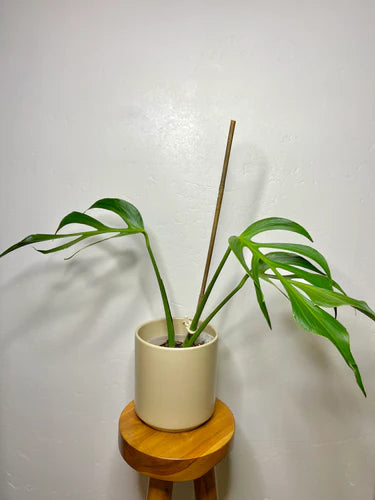
What is Monstera Burle Marx Flame?
The Burle Marx Flame is a hybrid plant that was created by creating a crossbreed between the Monstera Dilacerata with the Philodendron Insulare. The Burle Marx Flame is named after the Brazilian artist and architect, Roberto Burle Marx.
The Monstera Burle Marx Flame is a unique tropical plant that is native to Central and South America. A lot of people get it confused with Monstera Dilacerata, which has deeply lobed leaves while the Burle Marx Flame has more narrow, deeply etched leaves.
With significantly narrower foliage, the Monstera Burle Marx Flame is a jaw dropping choice for plant lovers who are looking for a unique addition to their home or indoor jungle.
Now you might be wondering how you take care of Burle Marx Flame, if so read below for the basics of taking care of this magnificent beauty!

Monstera Burle Marx Flame Plant Care Guide:
Here are some quick tips to understand the basic care:
Botanical Name: Monstera Sierrana
Another name: Monstera Sierrana, Monstera Deliciosa var. Sierrana, Bone Monstera
Plant type: Slow growing
Exposure to sunlight: Plenty of bright indirect light
Soil type: Well-draining and very chunky soil
Color: Green and yellow-to-white variegation
Water: Moist but not wet
Favorable climate: Tropical & Humid
Preferable Fertilizer: Liquid fertilizer
Propagation: Stem cuttings with node - air layer for best results
Toxicity warning: Toxic if ingested
Status: Very Rare
Height: 6FT tall (1.8M)
Origin: Asian countries like southern China, Japan, Taiwan, and Malaysia.
Now that you've gotten a quick overview of this very rare Burle Marx Flame Monstera, we will give you important tips, do’s, and don'ts with growing this coveted plant.
Monstera Burle Marx Flame Soil Mix:
The Burle Marx Flame prefers to grow in moist, well-drained soils that are high in organic matter. This plant can tolerate some shade, but it prefers to grow in full sun to partial sun conditions. Don’t allow the soil to get too hot or too cold, as it can shock your plant.
When soil and temperature conditions of the plant’s environment is right, the leaves of this plant can grow up to 2 feet long and 1 foot wide! When planted in a pot, it will not grow to 20 feet tall, so don’t worry about your ceiling too much!
Monstera Burle Marx Flame Watering:
When it comes to watering your Burle Marx Monstera, the general rule of thumb is to water when the top inch or two of soil is dry. However since this is a rare plant, there are a few things to keep in mind with this plant.
First, Monstera are native to tropical rainforests and therefore prefer consistent moisture to mimic their natural environment. If you notice that your soil is drying out quicker than normal, it’s a good idea to give it some extra water or change the soil mixture you have to help retain more moisture. You may even want to put it next to a humidifier or mist your plant’s leaves with some water to mimic your tree’s naturally humid environment in the wild.
Second, the size of your pot will affect how often you need to water. A small pot will dry out more quickly than a large one, so you may need to water more often. But you don’t want to put your plant in a pot that is too big for it, otherwise you may give it too much water and root rot could set in much faster. A good rule of thumb is match your plants root ball with a pot 2 size bigger allowing room for root growth.
Third, the type of pot you’re using will also affect how often you need to water. Clay pots tend to dry out more quickly than plastic pots, so you may need to water more frequently. This is due to clay pots absorbing some of the water and evaporating off of the surface of the pot. Plastic is better at keeping the moisture in, but it also doesn’t let your soil breathe as much as a clay pot would.
Here are a few tips for watering your Burle Marx Flame Monstera:
- Water in the morning so that there is no stagnant water on the leaves overnight
- Use lukewarm water rather than cold water to not shock the roots
- Tilt your pot so that all of the water escapes
- Be sure to empty any drainage tray after watering so that the roots don’t sit in wet soil
- If you notice that the leaves are drooping, it’s a sign that the plant needs more water
Burle Marx Flame Lighting:
It absolutely needs bright, indirect sunlight in order to thrive. If you don’t have a spot in your home that receives bright, indirect sunlight, you can try growing it near a window and a grow light.
The best way to tell if your Monstera Burle Marx Flame is getting enough light is to observe the leaves. If they are pale or yellow, that means the plant is not getting enough light. On the other hand, if the leaves are dark green and starting to curl, that means the plant is getting too much light.
The best way to test if your houseplant is getting enough light is to get a light meter.
Burle Marx Flame Humidity:
When it comes to the temperature for your Monstera Burle Marx Flame, the best temperature range is between 70-85°F (21-29°C). If you can keep your home, office or greenhouse at these temperatures year-round, that’s ideal. But, if not, don’t worry. As long as you can provide a warm environment for your plant during the winter months, it should be just fine.
However, with added humidity comes problems unless you have good air circulation. Mold and fungal problems can start from bad airflow, which will compromise your plants growth and even kill your plant.
Monster Burle Marx Flame Fertilizer:
Fertilizing your Burle Marx Flame Monstera is important to keep it healthy and growing vigorously. Use a balanced fertilizer with a ratio of 5-2-3 once a month during the growing season, spring through summer.
If you notice your plant isn’t growing as vigorously as it should be, you can increase the frequency to every two weeks. Be sure to flush the soil the next time you water, after each fertilization to prevent salt build up.
Another fertilizing option is to provide your plant with rich organic matter and compost in it's soil for consistent nutrients. Since Monstera are naturally heavy feeders, this can be a good option. We'd just suggest using half dilutions of your liquid fertilizer to start, so you don't burn your leaves.
Monstera Burle Marx Flame Toxicity For Pets & Humans:
The Burle Marx Monstera is mildly toxic if ingested, so keep it away from pets and children.
Monstera Burle Marx Flame Propagation:
If you’re looking to propagate your Burle Marx Flame Monstera, there are a few very important steps to take to ensure your current plant and the new one remain healthy through the propagation process. First, make sure you have a good, clean, and sharp pair of pruning shears.
Stem Cuttings
To start, choose a healthy stem that is at least 6 inches long. Cut the stem about an inch below a leaf node (the point where leaves branch off the stem and has an aerial root). Next, remove the lower leaves from the cutting so that you are left with 2-3 leaves near the top.
Now it’s time to plant your Burle Marx Flame cutting. You can propagate this plant in water, air layer, or soil, and each way can be very successful. Every house plant enthusiast who regularly propagates their plants will have their favorite way of doing it, but really, they will all work.
However, air layering has the highest success rate due to the plant continuously giving it nutrients it needs while growing the roots before you even cut the plant.
If you choose the other two options, make sure to take extra cuttings because it’s likely that not all of your cuttings will root. Usually there is about a 70-80% success rate with stem cutting propagation.
Propagating in Water
After you’ve taken your plant cutting, place it in a jar or a vase with water (darker is best, so algae doesn't grow). Make sure not to put the remaining leaves in the water, as that can grow bacteria faster and make your propagation unsuccessful.
It’s always recommended to dip the end of your cutting in a propagation promoter to increase your chances of propagation success.
Make sure to change the water completely in your vase every 2-3 days while you wait for roots to grow. For best results, the best water to use in order is: rainwater, distilled water, filtered water, then tap water. In 4-6 weeks, you should be ready to transplant your cutting into soil and enjoy your brand new propagated Monstera Burle Marx Flame plant!
Propagating in Soil
First, you’ll need to find a well-draining potting mix. This is important because Monsteras don’t like sitting in wet, soggy soil. Once you’ve removed the lower leaves and dipped the end in a propagation promoter (which is optional, but highly recommended), you can plant your cutting in the potting mix and water it well.
You’ll want to keep an eye on your cutting and make sure the soil isn’t getting too dry or too wet. If the soil is too dry, your cutting will start to wilt. If the soil is too wet, your cutting could rot. Once your cutting has taken root and started to grow, you can begin watering it less frequently.
A tip is to put it in a mini greenhouse or gallon ziplock bag over it to help have higher humidity.
Problems After Propagating
After you’ve taken the time to propagate your Burle Marx Flame, it can be frustrating to run into problems. Here are some common issues and how to solve them.
If your plant is wilting, it’s likely due to lack of water. Check the soil and make sure it’s moist, not wet or dry. If the soil is too dry, give the plant a good watering. If the soil is too wet, let it dry out before watering again.
If your plant is yellowing, it could be due to too much or too little light. Monstera Burle Marx Flame prefers bright, indirect light. If your plant is getting too much sun, move it to a shadier spot. If it’s not getting enough sun, move it to a brighter location.
If your leaves are browning or curling, this could also be due to too much or too little light. But it could also be due to pests or diseases. Check your plant stem and leaves carefully, then treat accordingly if needed.
Monstera Burle Marx Flame Pests & Diseases:
Some common pests that you might find hanging around your Monstera plant are fungus gnats, flies, aphids and rarely, various kinds of leaf-eating pests.
These pests can bring disease to your plant and make it less desirable to look at, so it’s best to take care of any pest problems as soon as you see it. A common way to treat a pest problem is by using neem oil, but usually some natural soapy water can handle most pests. All you have to do is wipe down the leaves and stem with soapy water and you’ll wipe away any pests with it.
If there are pests living in the plant’s soil, you’ll need to take more serious action to take care of the problem.
Is Monstera Burle Marx Flame Rare?
One of the most rare Monstera in the trade - Monstera Dilacerata / Burle Marx Flame / Bone Monstera is an extremely rare and highly sought after Monstera in the current rare plant market. This Monstera is known for its extremely thin leaves and wide fenestration.
FAQ: Monstera Burle Marx Flame
What is Monstera Burle Marx Flame?
Monstera Burle Marx Flame is a rare and unique variety of Monstera that is prized for its striking foliage. The leaves are elongated and have a rippled or "flame-like" pattern, which gives the plant its name. It's a tropical plant that enjoys similar care conditions to other Monstera varieties, such as Monstera Deliciosa. It's an excellent choice for those looking to add a unique touch to their indoor plant collection.
What Humidity is Good for Monstera Burle Marx Flame?
Monstera Burle Marx Flame prefers a humidity level of around 60-80%. However, it can tolerate lower humidity levels, down to about 40%. If you find that the air in your home is too dry, consider using a humidifier near the plant or placing the pot on a tray filled with water and pebbles to increase humidity.
Can You Put a Philodendron Burle Marx in Too Much Light?
Yes, a Philodendron Burle Marx can suffer from too much direct sunlight. While the plant enjoys bright, indirect light, exposure to harsh, direct sunlight for extended periods can lead to leaf scorching and loss of vibrant color. If you notice signs of sunburn on the leaves, such as brown or yellow patches, consider moving the plant to a location with filtered or indirect light.
What is the Difference Between Monstera Dilacerata and Burle Marx Flame?
Both Monstera Dilacerata and Burle Marx Flame are unique varieties within the Monstera genus, but they have distinct differences:
-
Leaf Shape: Monstera Dilacerata has long, slender leaves with deep splits but without the "flame-like" pattern that Burle Marx Flame has.
-
Growth Habit: Monstera Dilacerata tends to have a more upright growth habit, while Burle Marx Flame may exhibit more vining tendencies.
-
Care Requirements: Both plants have similar care needs, such as bright, indirect light and well-draining soil, but Monstera Dilacerata may be a bit more tolerant of lower humidity levels.
Where To Buy Monstera Burle Marx Flame In California:
If you're looking to buy a healthy and well established Monstera Burle Marx Flame, look no further than plantvault.com!

If this Monstera Burle Marx Flame care guide helped you, please consider a share. It's free and helps more than you can imagine!


